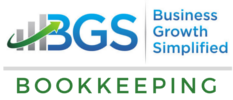 Well, the SBA released the application small businesses need to complete and submit to claim loan forgiveness on the PPP loans. As with any government document, this form can quickly become your worst nightmare. But, avoiding this paper chase may have even worse consequences.
Well, the SBA released the application small businesses need to complete and submit to claim loan forgiveness on the PPP loans. As with any government document, this form can quickly become your worst nightmare. But, avoiding this paper chase may have even worse consequences.
A few weeks back we published some preliminary requirements on what to expect if you were looking to have your PPP loan forgiven. Let’s take a look at how this thing currently works.
The Gottcahs of the PPP Loan Forgiveness Application
Like anything else with the government, the various permutations always come with a level of complexity that communion bite you if you’re not careful. Here are the things within this application that could cause small business owners’ problems
Covered or Alternative Period
These two terms are used in the application too reference the 8-week qualified payroll period for which your PPP loan can be forgiven. Because each company implements payroll differently calculating this can get a little dicey.
Wage/Hours Reductions
How much money you received for your PPP loan was calculated from your staffing before the crisis. So, they base your forgiveness on how many workers you paid and how much you paid them. If you paid less, then the amount of the loan forgiven may be lower than the amount you borrowed. We think this will be the big gotcha for many small businesses.
Calculating your FTE (full-time equivalents)
 The PPP loan was created to keep people off the unemployment rolls, so forgiveness ties directly to the number of employees you used the money to support. Calculating your full-time equivalents or FTE is big part of this reporting.
The PPP loan was created to keep people off the unemployment rolls, so forgiveness ties directly to the number of employees you used the money to support. Calculating your full-time equivalents or FTE is big part of this reporting.
However, the government does understand that for owners do not operate in the red may have required cutbacks 2 employee counts a work hour. So, another complicated area of this application is calculating that reduction and how it reduces the amount of the loan used directly for the purpose which it was intended – pay employees wages!
Removing non-qualifying payroll cost
Not all payroll costs are forgivable. Many benefits provided by businesses do not qualify. Therefore, you’ll need to calculate which of these things can be included and which ones need to be removed when asking for PPP loan forgiveness
25% Qualified Non-Payroll Expenses
The portion of the PPP loan forgiveness That was not payroll related fell into the rent/mortgage payment and the associated expenses arena. These expenses are pretty cut and dry for the most part, however many small business owners don’t understand that their mortgage is not classified as a business expense. Only the interest qualifies, therefore in the non-payroll expense category, BGS bookkeeping’s believe this how owners will get burned. Thinking their mortgage payment qualifies for forgiveness when interest expense only qualifies. Make sure you understand this fact when submitting you are application.
What Documents Will You Need to Submit?
 The next hurdle completing your application and pulling together all your supporting reports to submit with your application. For the most part they will be like what you needed to apply for the PPP loan. You’ll just need to gather those reports for your covered period. Here is a short-list of most frequently need items:
The next hurdle completing your application and pulling together all your supporting reports to submit with your application. For the most part they will be like what you needed to apply for the PPP loan. You’ll just need to gather those reports for your covered period. Here is a short-list of most frequently need items:
- Payroll Report
- Benefits reports
- Bank Statements
- Commercial Mortgage Statement
- Utility Bills
Now, if your bookkeeping is not current and you’re not organized with your supporting documentation, then this could be a significant hurdle. This may be a good Time to seek the assistance of a good bookkeeper to help you get and stay organized. Schedule a time with the BGS bookkeeping consultant to get help with your accounting in record keeping now and going forward.
What Happens If You Don’t Qualify for PPP Loan Forgiveness?
 Many businesses took the loans believing they would be a good way to fund other opportunities availed during the crisis at a low cost. This was a good strategy being debt could be secured at 1% annual interest. However, many people did not consider that PPP loans come due in 24 months! This could come back to bite them.
Many businesses took the loans believing they would be a good way to fund other opportunities availed during the crisis at a low cost. This was a good strategy being debt could be secured at 1% annual interest. However, many people did not consider that PPP loans come due in 24 months! This could come back to bite them.
Even worse will be those small business owners who do not account for their PPP loan forgiveness correctly. In these cases, owners may find that only a small portion of what they thought would be covered actually are forgiven. As a result, these owners get stuck with 10s of thousands of dollars of debt on their balance sheet that must be fully repaid in 24 months’ time.
My question to you is “do you have enough confidence in the economy that your net profit will be significant enough to repay that loan in 24 months?” Not the kind of bet many financially competent business owners would take.
Make sure you understand what you need to do to Assure you get the maximum amount allowable of your PPP loan forgiveness. Seek the help of your accounting or bookkeeping advisor. If you’d like a second opinion.
Be careful who you get your help and guidance from. We helped dozens of business owners get funded when they were told they did not qualify by other CPA’s and accountants. If you’d like a second opinion, schedule a free console using the form below.
Remember ignorance is NOT a legal defense. This is a critical item in the financial health of your business after COVID-19. Don’t take it lightly and get the help you need to make sure you maximize the amount forgiven on your PPP loan and let’s come back stronger than before!
xporn
xnxx
Phim sex
Uk Public Liability Insurance
How To Blur Out Your House On Google Maps
Pure Massage Riverview
Brendan Gallagher Girlfriend
World Cup Netherlands Vs Argentina
Marauda
Daily Lister Craigslist
Travel Insurance For Canada
Adullam Cave
Best Women S Soccer Players
Saudi Arabia Us
English To Bulgaria
Porn vido indan
Chopped Hazelnuts
Jordan Binnington Injury
Hopper S4
Tracksuit Set Women
Food In Portree Scotland
How Much Is A Fitbit
Aircraft Right Of Way Rules

